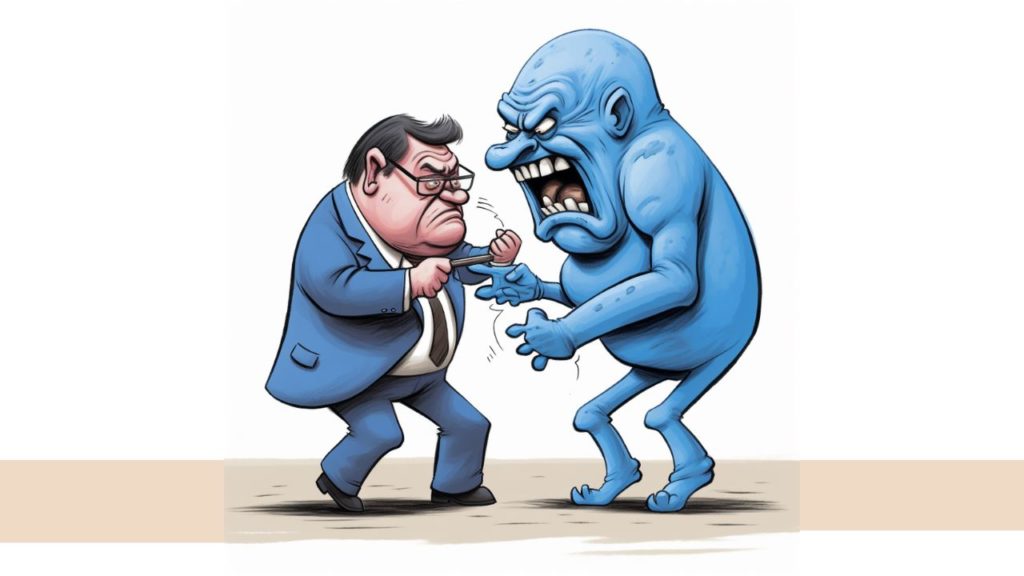Handling Difficult Team Members
In the dynamic world of Scrum, collaboration, agility, and effective teamwork are the keys to success. But what happens when you encounter difficult team members, a team member who disrupts this harmony, exhibiting non-cooperative or difficult behavior?
It’s a scenario that many Scrum teams face, and it can be a significant hurdle to achieving project goals.
However, there’s no need to fear or falter when confronted with such challenges. In this blog post, we will explore strategies to tackle uncooperative and difficult Scrum team members, ensuring that your team remains on the path to success.
Before we proceed any further, please watch this short video on this topic.
But before we delve into solutions, let’s acknowledge that this situation is more common than you might think.
Whether you’re a Scrum team member or a Scrum team lead, the chances of encountering a challenging team member are ever-present.
Even the most harmonious Scrum teams may have That One Person who, while generally a valuable contributor, occasionally exhibits stubbornness or inflexibility.
Clear Guidelines and Expectations
The first step in dealing with uncooperative team members is to establish clear guidelines and expectations.
Ensure that every team member comprehends the shared project or sprint objectives and what is expected in terms of cooperation.
This sets the tone for interactions and aligns everyone towards a common goal. It’s an essential foundation for fostering a productive Scrum environment.
Fostering Open Dialogue
Communication is Key. Encourage open dialogue among all team members.
Create an environment where issues and problems can be openly discussed without fear of judgment.
Open communication paves the way for productive discussions, leading to potential solutions and compromises that everyone can endorse.
It is through these candid conversations that the team can collectively navigate challenges.
Empathy in Action
When a team member displays non-cooperative behavior, it’s crucial to dig deeper and identify the underlying causes.
Stress, personal issues, or lack of motivation can be at the root of the problem. By understanding these factors, you can collaborate with the team members to find ways to address these issues and re-engage them in the process.
This empathetic approach can make a significant difference in resolving the situation.
Active Listening
During meetings or one-on-one discussions, take the time to actively listen to your non-cooperative team member.
Allow them to express their opinions fully before jumping into offering solutions.
Actively listening demonstrates respect and ensures that all perspectives are considered in the search for resolutions.
Acknowledging Contributions
Every team member’s contributions, successful or not, should be acknowledged.
It’s essential for everyone to feel valued for their efforts, as this encouragement fosters continued engagement in future tasks.
Recognizing contributions is a powerful motivator within the team.
The Leader’s Role is to maintain a positive
Negativity can quickly spread within a Scrum team if someone isn’t cooperating.
As a Scrum team member or lead, it’s vital not to let this negativity affect you personally.
Your attitude can significantly impact the team’s overall atmosphere. Instead, focus on staying positive and encouraging others to do the same.
Flexibility and Patience
Lastly, remember that patience is crucial when dealing with non-cooperative behavior.
Be flexible with deadlines and timelines if necessary, while always maintaining professionalism.
Progress may take longer than anticipated, but with patience and persistence, you can navigate through the challenges.

Difficult Team Members Conclusion
In the world of Scrum, achieving success often hinges on effective teamwork and collaboration.
Dealing with uncooperative and difficult team members is a challenge that requires a strategic and empathetic approach.
By following the steps outlined in this guide, you can help your Scrum team overcome these obstacles and continue on the path to success.
Remember, it’s not just about managing difficult team members; it’s about building a stronger, more resilient team as a result.
IMPORTANT: Karpman Drama Triangle in Scrum and How the Victim Role Impacts Teams
